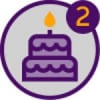Hospice...Now What?



The handbook is straightforward and easy to understand, however; the marketing/intake person emailed: "Check no CPR, no intubation, no artificial ventilation, do not transfer to the hospital, also no hydration, nutrition or dialysis. So it's no to everything as we discussed." The problem is we did NOT discuss the MOLST form. We already had one in place and the instruction by her to check "No" to everything is leading. I know how to stand my ground with information in the handbook and Medicare/Hospice (Medicare.gov), but what's up with the check no to everything directive? Do I need to check everything no for mom to receive hospice services?
Has anyone else had experience with hospice? I understand that not all experiences are nor will be the same, but please share your experience, so I may learn what to expect or what may be deemed normal (services/communications...). Thank you
Comments
-
Hi Wilted-- both my MIL and my mom were on hospice for extended periods. It was the same company, so I only know one "normal". MIL was at her home, and I didn't deal with paperwork. Mom was in MC, and this hospice had a number of patients there. Unfortunately, I have no recollection of what kind of paperwork I had to do!, but I imagine similar to yours. Mom already had a DNR on file, so I had that assurance, but I wanted to keep her out of that ambulance forevermore! She was 91 and very frail (MIL the same although she lived longer in the end).
We already knew Mom's wishes regarding ventilation, IV hydration, tube-feeding etc. her advance directive, written in her early 70's, prohibited all that if it was not going to have a beneficial/therapeutic effect, but rather was only to prolong life artificially. What none of us anticipated was the state law which required MCs to send anyone who reported hitting their head in a fall, to the ER. That's difficult when you know your resident doesn't even remember falling!
Both women went off hospice temporarily on a few occasions between them. Mom's hip sheared and she fell. Hospice was there in a few minutes. They ordered mobile xray, which came up negative. Mom continued to be in pain. We and hospice decided to go to ER for better xrays, as the feeling was she'd be happier not in pain if she had indeed broken her hip. She had, and surgeon, hospitalist, hospice, and I (and bro, long distance on phone) hashed out the consequences of this or that path forward. We finally decided, replacement surgery was the least of three evils. Hospice discharged Mom, and the surgery proceeded. We were prepared for her not to survive it, but she did very well. Six nights of hospital care later, she returned to MC, with hospice's assurance that they would count her as being in hospice the second she reached the door of the MC. It was really nice to have that RN visiting to keep an eye on the incision etc, which our RN decided she would call comfort care. Even removing staples so Mom didn't have to ambulance to the dr office was comfort care!
Long story short: we chose hospice because we wanted no artificial life-prolonging measures, only comfort care to the end. We left hospice briefly to provide hospital care. We returned As Soon As Possible to continue comfort care. I would recommend hospice to anyone whose MOLST and wishes would indicate they are ready to go with nature, as it were. Having hospice was very comforting to family, and to Mom, who only knew these people as nice folks who cheered her up from time to time!
0 -
Hospice began helping my dad at his MC about 2 months ago after a stay in the hospital. They have been such a relief and I don't know what I'd do without them. The nurse visits at least weekly, but she'll check in with him if she's called back to see another resident. She communicates with me each time with even the smallest detail. The staff reported a minor fall and she was there within 20 minutes.When I signed the forms, the nurse was with me and talked me through all of the questions. I did choose no to all of them, but she made it clear it was my choice. She's on the same page with me that she'll do everything she can to keep him comfortable and in place - no hospital.
I hope that's helpful to you. Best wishes.
0 -
Thank you both for sharing your experiences. I understand written procedural information tempered with choice. Instruction of what to select on a form seems pushy, especially if different from the handbook that outlines: advance directives are not a requirement for hospice services.
0 -
Our hospice team nurse told me I could answer however I wanted on the transporting to hospital. If we went the route for treatment then we would need to remove hospice but they’d come back later if we wanted. I answered “no” because that’s why we had hospice onboard. Only wanted comfort care in preparing for her passing. I think leading you is wrong. Maybe it’s just a breakdown in their communication. Maybe seek another hospice’s evaluation for a second opinion? Ugh!0
-
If you aren't ready to do comfort care and still want to intervene and treat, then perhaps the patient is ready but you are not.
Hospice goal is to keep the patient comfortable at the end of life. When my mother had a cardiac event she was on hospice. I had no desire to see her transported to the hospital for a bunch of tests and possible treatment to keep her body alive when her mind was gone.
I do think that if the fact that a nurse instructed you how to fill out the form is bothering you, perhaps you should find a different hospice, because it already sounds like it might not be a good fit for you (not your LO) and you will be the one communicating with them.0 -
Hi KD,
My 90+ mom (with dementia) is currently under hospice care at home after suffering a stroke. She was hospitalized 3 nights, did 20 days in rehab and discharged to home on hospice. A year prior to all of this, I (her only child) signed a POLST and at the time checked "Selective Treatment" which on our form means "in addition to treatment described in Comfort-Focused Treatment" use medical treatment, IV antibiotics and IV fluids as indicated. Do not intubate. May use non-invasive positive airway pressure. Generally avoid intensive care." Again, this was signed prior to her hospice care.
When our Hospice Case Manager saw the selection she didn't try to have me change it since it included "Comfort-Focused Treatment." I understand that Hospice becomes our "911" but they also explained to me that for example if my mom breaks a hip or other type of fracture, that her treatment to fix it can be characterized as comfort care or that she can be taken out of hospice and brought back in since her treatment would be to avoid pain and make her comfortable. Anyway, our hospice service seemed to be pretty flexible despite what their brochure said. If you don't feel that your hospice service offers the same flexibility, you may want to shop around for others. Good luck! You came to the right place for advice and support.
0 -
I feel there was a breakdown in communication which has been addressed. Prior to hospice the MOLST form did include attempt resuscitation, non-invasive ventilation, transfer to hospital, etc., The form did require updating, but according to the handbook did not need to be done at the time of admissions (addressed).
In the MOLST it is clearly listed that transfer to the hospital can be done if needed for comfort. Mom is 90 and frail, birthday is in a few weeks. I am onboard with comfort vs. aggressive treatments that do not enhance nor extend life and have been saying this to her doctors for 2 years. It took what seems like an eternity to address/test for dementia, which I later realized (according to research) Dementia/Diabetes are linked. At this time, there is no need nor desire for dementia treatment that is unlikely to change the progression. Overtreating diabetes is also not desired, especially when it causes her stress/discomfort. If numbers are high let them be, but try to keep them within a range that seems to work for her not based on a chart or taking more medicines with side effects that outweigh the good.
I want to do what makes sense for mom with options. After reading the Medicare/Hospice guide I understand how hospice paid by Medicare works. We have an appointment this morning to finalize admissions/create the plan of care. I learned the difference between limiting treatment vs. assisted suicide (not hasten death, just let it happen). ALZ Assoc provided helpful information on End-of-life decisions to use as a guide when discussing with the hospice team and making decisions.
Thank you all for your responses, sharing your experiences.
0 -
Thanks for the update. Hope communication is now open and understood by all. I wish the best for you and yours while moving down this awful path.0
-
Thanks M&M,
It's not so bad, at least I will have help with end of life decisions, help with mom's medicines, more respite opportunities, etc. I have upcoming respite scheduled for a week+ at the end of the month. Mom will go to a place where she has gone before and she likes. I will decompress and plan. Mom's 91st birthday will be celebrated while in the facility, but that could not be avoided due to scheduling/my need for a break.
At least she will be safe, limit or avoid trips to the ER/hospital, and unnecessary/unwanted medical appointments. The focus now is for her to eat as healthy as possible, take the least amount of medicines without relapse, and live as long as she can in comfort. She must realize that tomorrow is not promised to anyone, so we all have to do what we have to do today and hope tomorrow a better day will be!
0
Commonly Used Abbreviations
DH = Dear Husband
DW= Dear Wife, Darling Wife
LO = Loved One
ES = Early Stage
EO = Early Onset
FTD = Frontotemporal Dementia
VD = Vascular Dementia
MC = Memory Care
AL = Assisted Living
POA = Power of Attorney
Read more
Categories
- All Categories
- 591 Living With Alzheimer's or Dementia
- 317 I Am Living With Alzheimer's or Other Dementia
- 274 I Am Living With Younger Onset Alzheimer's
- 16.9K Supporting Someone Living with Dementia
- 5.6K I Am a Caregiver (General Topics)
- 8.2K Caring For a Spouse or Partner
- 2.7K Caring for a Parent
- 225 Caring Long Distance
- 156 Supporting Those Who Have Lost Someone
- 17 Discusiones en Español
- 5 Vivir con Alzheimer u Otra Demencia
- 4 Vivo con Alzheimer u Otra Demencia
- 1 Vivo con Alzheimer de Inicio Más Joven
- 12 Prestación de Cuidado
- 3 Soy Cuidador (Temas Generales)
- 8 Cuidar de un Padre
- 23 ALZConnected Resources
- View Discussions For People Living with Dementia
- View Discussions for Caregivers
- Discusiones en Español
- Browse All Discussions
- Dementia Resources
- 8 Account Assistance
- 15 Help








